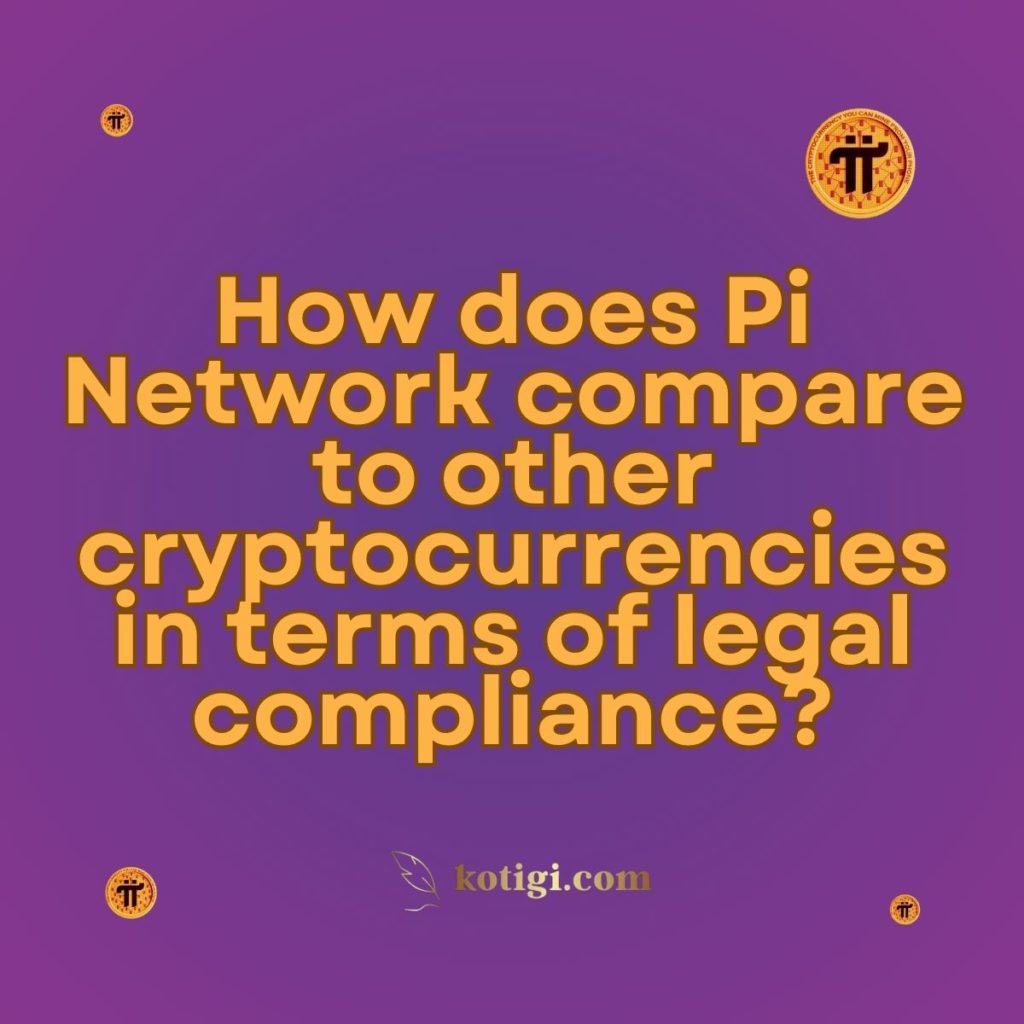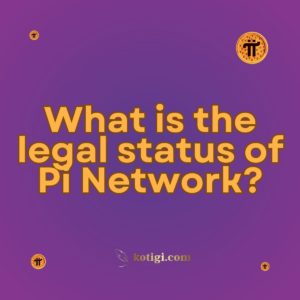
How does Pi Network compare to other cryptocurrencies in terms of legal compliance?
Pi Network stands out in the cryptocurrency space for its unique approach to mining and accessibility, but like all cryptocurrencies, it must navigate the complex and evolving landscape of legal compliance. Here’s how Pi Network compares to other cryptocurrencies in terms of legal adherence and regulatory efforts:
1. Compliance with Know Your Customer (KYC) and Anti-Money Laundering (AML) Regulations
1.1. Pi Network’s Approach:
Pi Network has implemented a KYC process that users must complete to fully participate in the ecosystem. This step is crucial for preventing illegal activities such as money laundering and fraud, aligning with global AML regulations. The platform requires users to verify their identity through a structured KYC process, which is increasingly becoming standard practice in the cryptocurrency industry.
1.2. Comparison with Other Cryptocurrencies:
While many leading cryptocurrencies like Bitcoin and Ethereum do not require KYC because they operate on decentralized networks, platforms built on top of these networks, such as exchanges and DeFi services, often implement KYC/AML measures. Pi Network’s direct integration of KYC into its user experience places it ahead of some decentralized projects in terms of regulatory compliance, though it mirrors the practices of centralized platforms.
2. Regulatory Recognition and Classification
2.1. Pi Network’s Status:
As a relatively new cryptocurrency, Pi Network has yet to be classified under specific regulatory categories in most countries. The project’s leadership appears proactive in addressing potential legal challenges, but Pi is still navigating the early stages of regulatory recognition.
2.2. Comparison with Other Cryptocurrencies:
Established cryptocurrencies like Bitcoin and Ethereum have faced extensive regulatory scrutiny and have been classified in various ways, from commodities to potential securities, depending on the jurisdiction. Newer projects like Pi often take cues from the legal precedents set by these established networks but must still undergo their own regulatory evaluations. In some regions, newer cryptocurrencies may face more stringent scrutiny as regulators become more cautious.
3. Global Regulatory Adaptation
3.1. Pi Network’s Global Strategy:
Pi Network aims to be a global cryptocurrency, accessible to users in various countries, which requires careful navigation of international regulations. The project has not yet faced significant legal challenges but may need to adapt its operations based on the evolving regulations in different regions.
3.2. Comparison with Other Cryptocurrencies:
Major cryptocurrencies like Bitcoin have been adopted globally but face varying degrees of regulation. In countries with strict cryptocurrency regulations, these networks often require third-party services like exchanges to implement compliance measures. Pi Network, with its user-friendly approach, may be better positioned to adapt to different regulatory environments, particularly if it continues to prioritize compliance from the outset.
4. Data Privacy and Consumer Protection
4.1. Pi Network’s Data Practices:
Pi Network collects personal information as part of its KYC process, which raises concerns about data privacy and protection. The project must comply with data protection laws, such as the GDPR in the European Union, to ensure that users’ personal information is handled securely and transparently.
4.2. Comparison with Other Cryptocurrencies:
Privacy-focused cryptocurrencies like Monero and Zcash prioritize anonymity and data privacy but often face regulatory challenges due to their resistance to KYC/AML processes. Pi Network’s more transparent approach to user data may help it avoid some of the regulatory issues faced by privacy coins, but it must ensure robust data protection measures to maintain user trust and comply with privacy regulations.
5. Securities Law Compliance
5.1. Pi Network’s Potential Classification:
The question of whether Pi coins might be classified as securities has not yet been definitively answered. If they were to be classified as securities, Pi Network would need to comply with additional regulatory requirements, such as registration and disclosure obligations.
5.2. Comparison with Other Cryptocurrencies:
Projects that have conducted Initial Coin Offerings (ICOs) or token sales, such as Ripple (XRP), have faced legal battles over whether their tokens should be classified as securities. Pi Network has not conducted a public token sale, which may reduce its immediate legal risks, but it must still be cautious as it expands its ecosystem to ensure it does not inadvertently trigger securities regulations.
6. Legal Compliance Strategy
6.1. Pi Network’s Proactive Compliance:
Pi Network appears to be taking a proactive approach to legal compliance, incorporating KYC and preparing for potential regulatory challenges. This strategy can help it avoid the pitfalls faced by some earlier cryptocurrency projects that were slower to address regulatory concerns.
6.2. Comparison with Other Cryptocurrencies:
Many established cryptocurrencies initially operated in regulatory gray areas, only addressing compliance as legal scrutiny increased. Pi Network’s early focus on compliance could give it an advantage in the long term, particularly as global regulators continue to refine their approaches to cryptocurrency regulation.
Conclusion
Pi Network is taking steps to ensure legal compliance, particularly through its KYC process and proactive approach to potential regulatory challenges. While it is still early in its development, Pi Network’s focus on legal adherence compares favorably with other cryptocurrencies, especially those that have faced significant regulatory scrutiny. By prioritizing compliance, Pi Network positions itself to navigate the complex global regulatory environment more effectively, though it will need to remain adaptable as regulations evolve.





